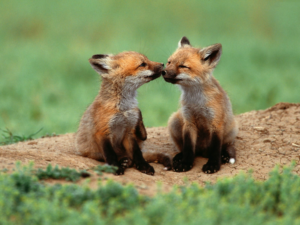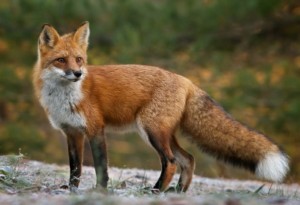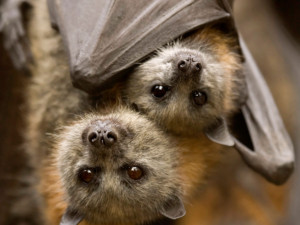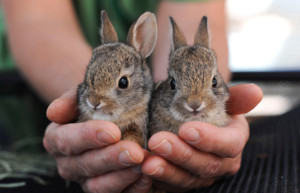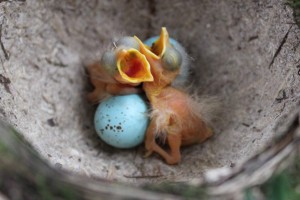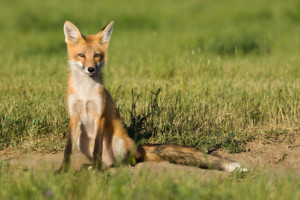As Spring is fast approaching, Alexandria’s wildlife will soon be making many more appearances! Spring is what one might call “Baby Animal Season”. The populations of our local wildlife will be skyrocketing, and many of us will be facing the reality that we share our neighborhoods with furry and feathered friends alike. In order to prepare for this deluge of adorable-ness, we have prepared a short guide to encountering wildlife in your community, and how to handle (or not handle) your new neighbors!
First things first – what kinds of animals should you be expecting to see in your neighborhood? Great question! Alexandria is home to a variety of furry, scaled, and feathered friends…
1. Foxes – These adorable furry friends are indigenous to Northern Virginia. They are typically shy and stay away from humans, but they do live quite closely alongside humans. Most of the time, humans have Fox sightings at night, but they have actually adapted to Urban life quite well, and tend to hunt during the day as well. A common misconception that seeing a fox in the daylight means it is rabid, and this is simply not the case! The mating season for the little guys is typically January-Early March, so you may hear an uptick of Fox vocalizations during this time!
2. Raccoons – These little cuties are very similar to Foxes in that they are also generally nocturnal, but have acclimated quite well to their Urban surroundings and tend to explore during the day as well. Again, the sighting of Raccoon during the day is NOT an indication of Rabies. These masked bandits are typically known as trash-can diggers and scavengers, but they’re actually a lot cleaner than people think- did you know that raccoons like to wash their food before they eat it, just like people?!
3. Bats- These little sky puppies get such a bad rep! There are wild myths about bats that talk about blood drinking or destroying people’s homes, but in reality, these guys are amazing for the environment. Could you imagine the number of insects we would have to deal with if we didn’t have bats keeping the population under control for us? While Bats can be vectors for the Rabies virus, they are fairly harmless – it is simply important to be educated about these furry friends and alert Animal Control if bats are found in your home.
4. Red Eared Slider Turtles – Raise your hand if you’ve seen these iconic Virginian turtles scurrying (slowly) around a lake or a pond near your home? They are easily identified via the red stripe that runs along the sides of their head. These guys are actually an invasive species, and are defined as naturalized wildlife in Virginia – this means that the sale or purchase of these little friends is actually illegal in VA. However, they make wonderful pets and can often be adopted (free of charge) from your local shelter!
5. Opossums – Here is another species that is widely misunderstood! These adorable little guys are famous for the term “playing possum”, which describes how they play dead when they are scared or threatened. However, these guys certainly have the ability to hiss or bare their teeth when they feel the need. Opossums are little furry nomads, and typically keep on the move rather than establishing a permanent home for a long period of time. These guys are super cool because they eat ticks, which slows the spread of Lyme Disease! Additionally, it is actually very unlikely for them to carry the Rabies Virus, as their core body temperature is typically too low for the virus to survive.
6. Baby Animals! Again, Spring and Summer and typically the months where baby animals are born and begin running around your neighborhood. If you remember nothing else from this post, remember this: baby animals are still wildlife! There is rarely a reason for humans to intervene in the life of a baby animal. If you encounter a young animal out and about, ignore your instincts, and don’t immediately “rescue” it. Spend a few hours checking to see if their mama comes for them – for example, mama bunnies leave their babies in the nest and only return to them 2-3 times per day. If and only if mama does not make an appearance AND the baby appears sick/injured, THEN you may call animal control for assistance. Typically, when baby animals have feathers/fur and their eyes are open, they are already independent! If you ever have questions about what to do when encountering a baby animal, call your local animal control.
While this list certainly does not encompass every species of animal you may see in Alexandria, it is a good representation of our most common animal friends. So now comes the question – how do I safely co-exist with this wildlife?
- First and foremost, don’t feed wildlife! The guys are experts at existing and thriving in the environments they have created for themselves. Feeding wildlife inhibits their ability to naturally exist in their habitats, and will also bring unwanted wildlife to your front door
- Leave them alone! Again, these are WILD animals. They are very well versed in their daily routines and do not need interactions from humans to survive
- Secure your waste! The best way to keep wild animals away from your home is to ensure that your trash is secured and sealed. Otherwise you may have new neighbors AND a mess on your hands
- Call animal control! Alexandria’s animal control officers are experts at handling wildlife. If you encounter something that is unusual, or have wildlife in your home, give them a call for instructions and advice. However, keep in mind that we do share our habitats with these creatures. Animal Control will never remove a healthy, thriving wild animal from their habitat… even if that habitat is your backyard.
So there ya have it! We hope this guide proves useful as you attempt to cohabitate with your furry, feathered, and scaly neighbors. And always remember, if you need assistance caring for your domesticated animals… give Alexandria Pet Care a call!


